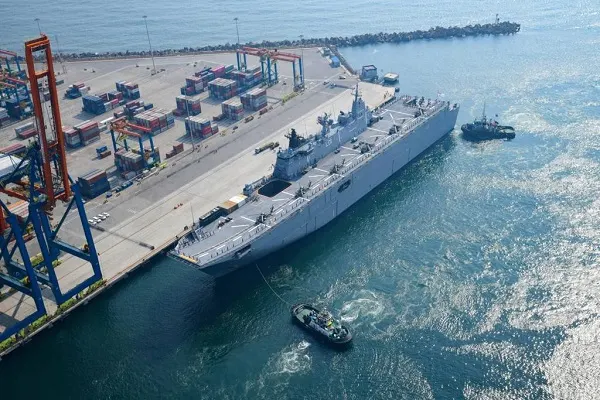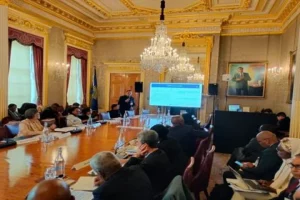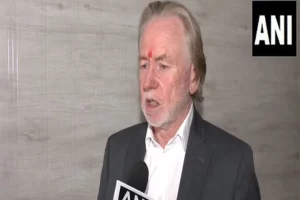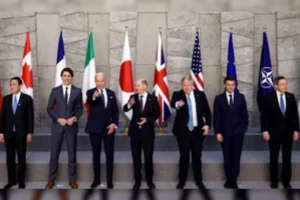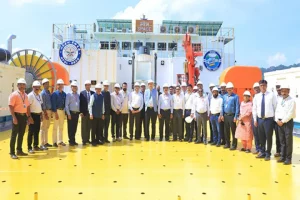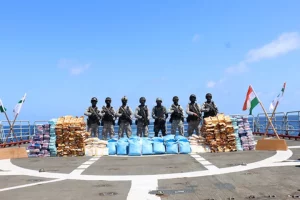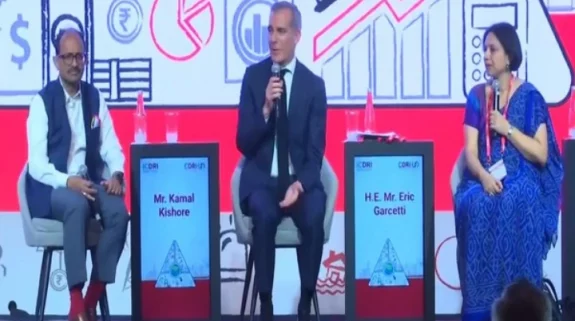Two Australian warships have arrived at the Eastern Naval Command Headquarters in Visakhapatnam as India and Australia continue to enhance their strategic partnership and spearhead efforts to ensure that the Indo-Pacific remains open and free.
Royal Australian Navy ships HMAS Adelaide and Anzac, which departed Darwin earlier this month, reached Visakhapatnam for Exercise ‘Indo-Pacific Endeavour 2022’ (IPE22) on Sunday.
With five ships, 11 helicopters and about 1800 personnel working with regional partners across the region from India to Indonesia to the Philippines, this is the largest edition of Australia’s flagship regional engagement activity since it began in 2017.
HMA Ships Adelaide and Anzac form the main maritime contingent and will participate in activities and joint training exercises with the Indian Navy in the areas of maritime law, humanitarian assistance and gender, peace and security, as well as military engagement.
One of the largest ships ever built for the Royal Australian Navy (RAN), the 230m-long Landing Helicopter Dock (LHD) HMAS Adelaide has eight ship-borne attack helicopters and 543 crew members. The 118m-long Frigate Anzac is manned by a crew of 119.
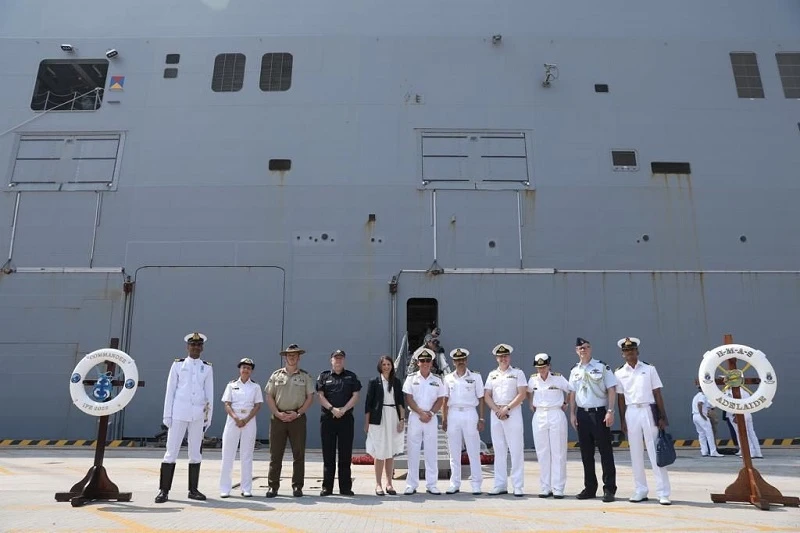
Kicking off with engagements in Maldives and Timor-Leste late September, IPE22 specially focuses on consolidating partnerships with 14 countries in South and Southeast Asia, including Vietnam, the Philippines, Laos, Cambodia, Thailand, Brunei, Malaysia, Singapore, Indonesia, Bangladesh, Sri Lanka and India.
The two Australian warships set sail for India from the Colombo port on October 26 after a Passage Exercise (PASSEX) with the Lankan Navy.
Before departing, IPE22 Commander Commodore Mal Wise had said that he was looking forward to fostering strong relationships with Australia’s Indo-Pacific neighbours from a whole-of-government perspective.
As reported by IndiaNarrative.com earlier, the Anthony Albanese government has made it clear that India is “at the heart” of Australia’s approach to the Indo-Pacific and beyond.
Takes a very big dock to make an LHD look small. Australia’s defence relations with India have blossomed to an advanced degree. Looking forward to seeing HMAS Adelaide and #IPE22 cohort when she calls at Sembawang in a few days. @SeaPowerCentre @CN_Australia https://t.co/PSpvNZDV0s
— Euan Graham (@graham_euan) October 30, 2022
The Royal Australian Navy (RAN) ships’ arrival at the Naval Base in Visakhapatnam comes at a time when both countries, which share the commonality of perspectives on several contemporary maritime security issues in the Indo-Pacific, build their partnership further, especially after the Indian Navy chief’s visit to Australia in September.
The Chief of Naval Staff (CNS) Admiral R Hari Kumar’s three-day visit took place as an Indian Navy P-8I maritime patrol aircraft was deployed to RAAF Base Darwin for the second time in six months for a joint exercise.
During his stay, Admiral Kumar held meetings with the Australian Navy chief Vice Admiral Mark Hammond, Vice Chief of Australian Defence Forces Admiral David Johnston, Secretary of Defence Greg Moriarty, Chief of Royal Australian Air Force (RAAF) Air Marshal Robert Chipman and Deputy Chief of Joint Operations Air Vice Marshal Mike Kitcher.
After two years of #Covid, @DefenceAust’s Indo-Pacific Endeavour has arrived back at India’s #Vizag port. Look out for HMA Ships Adelaide and ANZAC as part of the largest Indo-Pacific Endeavour since the activity began in 2017. #YourADF #IPE2022 #Defence #IndoPacific pic.twitter.com/yzp6uoVLtg
— Sarah Storey (@AusDHCIndia) October 30, 2022
He also visited the RAN facilities at HMAS Penguin and Hydrographic School, engaging in discussions on the need for raising the level of synergy and focused efforts for overcoming the challenges of the maritime environment.
India and Australia have also been working together closely in several bilateral and multilateral fora such as the Indian Ocean Naval Symposium (IONS), Indian Ocean Rim Association (IORA), and Western Pacific Naval Symposium (WPNS).
“At our heart, Australia and India are both Indo-Pacific nations. We share the Indian Ocean – one of the world’s greatest maritime resources. Our geography places us squarely in the middle of the world’s strategic centre of gravity. And as the world becomes more multi-polar, the region’s resilience will be tested,” Australia’s High Commissioner to India, Barry O’Farrell said in his address at the Indo-Pacific Oceans Initiative (IPOI) conference, earlier this month.
Over the next few days, the Indo-Pacific Endeavour is expected to provide further opportunities to both countries as they work together on their common goal of having an open, resilient and inclusive Indo-Pacific.
Also Read: Australia says India at the heart of its approach to Indo-Pacific and beyond






